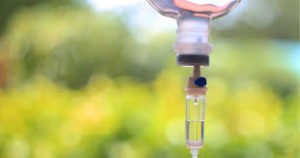
Recently Diagnosed or Relapsed? Stop Looking For a Miracle Cure, and Use Evidence-Based Therapies To Enhance Your Treatment and Prolong Your Remission
Multiple Myeloma an incurable disease, but I have spent the last 25 years in remission using a blend of conventional oncology and evidence-based nutrition, supplementation, and lifestyle therapies from peer-reviewed studies that your oncologist probably hasn't told you about.
Click the orange button to the right to learn more about what you can start doing today.
- You are here:
- Home »
- Blog »
- Healthy Living Products »
- Myeloma- Chemotherapy-induced Bladder Damage
Myeloma- Chemotherapy-induced Bladder Damage
“These results suggest that taurine offers a protective effect against CP-induced urinary bladder damage… Moringa leaves play an important role in ameliorating and protecting the bladder from CP toxicity”
The bad news is that if you undergo a chemotherapy regimen called cytoxan aka cyclophosphomide, you will probably end up with a multiple myeloma side effect of bladder damage.
The damage may be more or less serious but cytoxan will give your bladder a serious dose of toxicity aka damage. There is even an annual increase in developing a “treatment-related secondary cancer” in the form of bladder cancer.
I was diagnosed with multiple myeloma in early 1994. As part of my preparation for an autologous stem cell transplant I had two courses of high-dose cytoxan aka cyclophosphamide.
The good news is that you can prevent damage to your bladder from cytoxan toxicity by supplementing with either/or taurine or Moringa oleifera. The studies linked and excerpted below say that you should supplement both before cytoxan as well as after. If you are reading this before you undergo cytoxan chemotherapy then you are all set.
If you are reading this blog post after you have already undergone cytoxan chemotherapy then you are in the position that I am. I developed bladder damage/irritable bladder several years after cytoxan/cyclophosphomide therapy. I underwent cytoxan in September of 1995 and I am supplementing to reduce my risk of bladder cancer.
To Learn More About Chemotherapy-induced Side Effects- click now
I am both a multiple myeloma survivor and MM cancer coach. Have you been diagnosed with multiple myeloma? If you would like to learn more about evidence-based integrative therapies to both enhance chemotherapy while reducing toxicity please scroll down the page, post a question or comment and I will reply to you ASAP.
Thank you,
David Emerson
- MM Survivor
- MM Cancer Coach
- Director PeopleBeatingCancer
Recommended Reading:
- Multiple Myeloma Therapy- ASCT, Atrial Fibrillation, Heart Damage, Prevention
- Multiple Myeloma-Chemobrain Underreported in Autologous Stem Cell Transplant
- Multiple Myeloma Side Effects- Identify and Prevent
Protective effect of taurine against cyclophosphamide-induced urinary bladder toxicity in rats.
“Conversely, pretreatment with taurine (1% in drinking water to reach a dose of 1 g/kg per day) for 7 days before and 1 day after CP injection produced a significant decrease in urinary bladder weight (oedema) and a marked decrease in vascular congestion and haemorrhage, as well as a profound improvement in histological structure. Moreover, taurine pretreatment resulted in a significant decrease in lipid peroxide in urinary bladder tissue and glutathione content was greatly restored…
These results suggest that taurine offers a protective effect against CP-induced urinary bladder toxicity and may, therefore, decrease the limitation on its clinical application…”
The protective effect of Moringa oleifera leaves against cyclophosphamide-induced urinary bladder toxicity in rats.
“Cyclophosphamide (CP), an alkylating antineoplastic agent is widely used in the treatment of solid tumors and B-cell malignant disease. It is known to cause urinary bladder damage due to inducing oxidative stress…
From the results obtained in this work, we can say that Moringa leaves play an important role in ameliorating and protecting the bladder from CP toxicity…”
Hemorrhagic Cystitis aka Painful Bladder-
“MM Side Effects- Hemorrhagic Cystitis can cause disabling symptoms, e.g. frequency, urgency and pelvic pain, often localised to the bladder or urethra…”
Multiple myeloma side effects come with toxic chemotherapy and radiation. Fine. I get it. My problem is with my oncologist not telling me about the fact that my two cycles of high-dose cytoxan and three rounds of local radiation to my iliac crest could result in some degree of Hemorrhagic Cystitis aka dysuria, painful urination, etc.
Not to mention the fact that cytoxan/cyclophosphamide increases my risk of bladder cancer someday…
I underwent two rounds of cytoxan/cyclophosphamide chemotherapy in preparation for my haematopoietic stem cell transplant (HSCT) for my newly diagnosed multiple myeloma. Cytoxan has become a frequently prescribed induction chemotherapy for newly diagnosed myeloma patients.
The point of this post is to alert readers of this painful and perhaps deadly side effect of cytoxan chemotherapy. The study below cites everything from cranberry juice to intravesical hyaluronic acid to hyperbaric oxygen as being preventative therapies for Hemorrhagic Cystitis. Further, consider those integrative therapies listed in the integrative therapy guide in the Multiple Myeloma Cancer Coaching program.
Please watch the video below to learn more about the evidence-based, integrative therapies to combat treatment side effects and enhance your chemotherapy.
Recommended Reading:
Hemorrhagic cystitis
“Hemorrhagic cystitis or Haemorrhagic cystitis is defined by lower urinary tract symptoms that include dysuria, hematuria, and hemorrhage. The disease can occur as a complication of cyclophosphamide, ifosfamide and radiation therapy…”
Chemical- and radiation-induced haemorrhagic cystitis: current treatments and challenges
“The most frequently reported causal factors are radiotherapy to the pelvic area, where HC has been reported in up to 20% of patients, and treatment with cyclophosphamide and bacillus Calmette-Guérin, where the incidence has been reported as up to 30%…
The best evidence exists for intravesical hyaluronic acid as an effective preventative and active treatment, and for hyperbaric oxygen as an equally effective treatment option…
In transplantation settings, HC is typically associated with haematopoietic stem cell transplant (HSCT),..
With a tendency towards more aggressive treatment of cancer, including the use of HSCT, chemical- and RT-induced HC can be considered an increasingly important clinical issue, not least because it is a challenging condition to treat…


